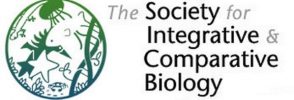Mark Westneat (University of Chicago) and John Long (Vassar College)
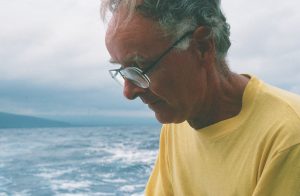
Stephen A. Wainwright (1931- 2019) was a leader in Biomechanics who combined his passion for breaking down disciplinary boundaries with his deep and creative insights into form and function in nature and design. Steve’s infectious enthusiasm for cross-disciplinary, open-ended inquiry, and his delight in people and their creativity, influenced generations of SICB members and the trajectory of SICB itself.
Well before the origin of the Division of Comparative Biomechanics at SICB, Steve was one of this discipline’s global founders, integrating approaches in morphology, physiology, and engineering in the ground-breaking collaborative book, Mechanical Design in Organisms (1976). He also helped develop the field through his faculty position at Duke University (1964-2019), and his leadership of the American Society of Biomechanics (President 1981), and of the Society of Integrative and Comparative Biology, then the American Society of Zoologists (President 1988). The details of Steve’s life, career, and influence were described by Robin Smith in her Duke Today obituary.
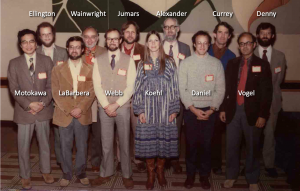
This tribute highlights the extraordinary impact Steve had on his students and colleagues. Many of the people influenced by Steve contributed their thoughts for this essay (see here for their full remarks). Steve was a creative and ground-breaking scientist who saw new ways to make connections between disciplines and ideas. As Tom Daniel stated, “He was, in a sense, a Leonardo da Vinci of our generation.” From his early work on corals, sea fans, and anemones to later research on fishes and dolphins, Steve’s insight into the mechanical design of organisms was profound. Kate Loudon reflected, “It is hard to describe in words how extraordinary it was to be in the biomechanics group at Duke as a graduate student. Steve’s generosity, creativity, and joyfulness was a catalyst for amazing interactions and scientific advances.” Steve taught us the beauty of blending art and science and the amazing scientific benefits of conceiving wild and crazy ideas in biology. Barb Block put it poetically: “He fed us his enthusiasm and inspiration, and we interwove our various budding expertises into a more complex canvas because he helped each one of us paint our unique science in a variety of interdisciplinary colors.”
Steve’s signature approach of interdisciplinary integration came to the fore with the blending of art, biology, and engineering for diverse audiences. Steve helped to found the Center for Inquiry-Based Learning with Norm Budnitz, who wrote, “Steve worked to bring the art of questioning to elementary and middle school science teaching, with all his usual joy in experiencing the natural world.” Steve’s own artistic focus was as a sculptor, and he encouraged those around him to consider building a model of their organism to test their understanding and deepen their insight. Ann Pabst recalls a key lesson she learned with Steve: “Build it! If you think you know how a structure works, try to build it – this endeavor will illuminate what you do not know quickly and emphatically! Then try again!” This approach was fundamental to many of us who worked with Steve, and the power of it culminated in Steve’s creation of the BioDesign Studio, an independent place for art and science to flourish. Co-founder Chuck Pell explained, “Steve thought up the idea of The BioDesign Studio as an institute for living structures, a place where anyone could come to build tangible models of their system. Those models inevitably surprised even the most learned of us by exposing unexpected properties.” Building models, whether physical, sculptural, mathematical, or computational, as a way of sparking insight into organismal function, is a key part of Steve’s intellectual legacy.
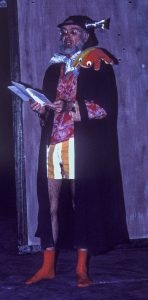
Steve’s students recall that his impact on our science and our careers was felt powerfully through his mentorship, supportive personality, and his intuitive understanding of what we, as aspiring young people in science, required to be successful. He encouraged us to seek, discover, and investigate the important, difficult topics in our fields. As Mimi Koehl writes, Steve helped us focus on the basic principles of our work, “subjecting us to the dreaded crystal ball question when we came to him with a research idea: If I had a crystal ball (Steve would say), and told you the answer to that question, so what? Why is it worth knowing that?” Yet his challenges were leavened with his continuous support. Sue and Clay Cook remember, “Steve’s genius was to use his critical eye to guide and focus our work while connecting us to the expertise of friends and colleagues.” Lisa Orton notes, “Steve was always about giving permission, his approach was to find out what we might be interested in doing or learning, and then giving permission to explore the thing we most dreamed of exploring.” Gail Grabowsky recalls Steve saying “I am just here to help you give yourself permission to become all you can be!”
Steve was personally, emotionally, and financially generous. His kindness and laughter helped to reduce the stress of academia, of making it through graduate school, or getting to the next level. His joy for art and science was profound, inspiring students and colleagues to open their minds and consider new ways of thinking. Melina Hale recalls, “Steve brought wonderful richness to science and life, drawing connections between art and biology through exploration and wonder. He mentored kindly and with a creative joy that was infectious.” Katie Muzik remembers a special moment with Steve: “How gleeful and ecstatic was our SAW, expressing his delight when introducing me 5 decades ago to the springtime redbuds and dogwoods blooming alongside Duke Forest! I was astounded and enchanted then, and remain quite amazed now, just remembering his unbridled and emphatic joy.” Janice Voltzow explained, “Steve nurtured us with creativity, generosity, and fine wines.” Bill Kier recalls, “he inspired by his boldness in reaching beyond normal disciplinary boundaries, and he had an infectious enthusiasm for form, function and beauty in nature that altered my view of the world.”
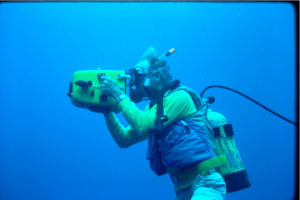
Steve’s blend of scientific rigor, generosity, and support created a wonderful environment where ideas flourished and important research happened. We are all honored to have worked with Steve, to have had a chance to reflect on how profoundly he changed us, and to appreciate his sculptor’s marks on the field of Comparative Biomechanics that he helped build. Steve Wainwright’s scientific legacy is destined to live on through the many ideas he developed and the people he inspired to continue exploring organismal design in creative ways.
